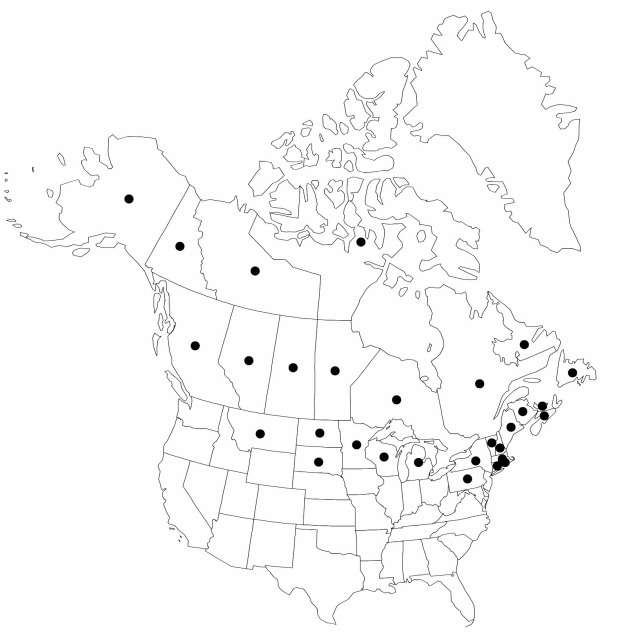Carex foenea
Enum. Pl. 2: 957. 1809.
Plants densely cespitose. Culms 20–120 cm. Leaves: sheaths adaxially white-hyaline or green-and-white mottled, papillose, summits U-shaped, shortly prolonged beyond collar; distal ligules 2–3 mm; blades 3–6 per fertile culm, green, without auricles, 8–30 cm × 2–4 mm, pliable. Inflorescences open, usually with widely spaced spikes, flexible, brown or greenish brown, 1.5–8 cm × 7–15 mm; proximal internode 5–25 mm; 2d internode 4–12 mm; proximal bracts scalelike, sometimes bristlelike to 1 cm. Spikes 3–7(–11), usually distant, oblong to ellipsoid, 7–25 × 5–7 mm, base clavate to attenuate, apex usually rounded. Pistillate scales usually reddish brown, or green or gold in shade forms, with 3-veined green or brown midstripe, ovate, 4–5 mm, equaling, ± covering perigynia, apex acute to acuminate. Perigynia erect-ascending, green or brown, conspicuously 4–9-veined abaxially, veinless or conspicuously unequally 4–8-veined adaxially, ovate, plano-convex or concavo-convex, 3.3–5 × (1.5–)1.7–2.5 mm, 0.6–0.8 mm thick, margin flat, including wing 0.2–0.4 mm wide, smooth or ciliate-serrulate at least on distal body; beak white or brown, white margin at tip, flat, ± ciliate-serrulate, abaxial suture inconspicuous or with white margin, distance from beak tip to achene (1.4–)1.7–2.5 mm. Achenes dark brown at maturity, ovoid-orbicular, 1.3–2.1 × 1.2–1.7 mm, 0.5–0.6 mm thick, 1–1.4(–1.5) times as long as wide. 2n = 82, 84.
Phenology: Fruiting late spring–early summer.
Habitat: Dry to moist, acidic sands, gravels, open disturbed places, grasslands, open woods
Elevation: 10–1000 m
Distribution

Alta., B.C., Man., N.B., Nfld. and Labr., N.W.T., N.S., Ont., P.E.I., Que., Sask., Yukon, Alaska, Conn., Maine, Mass., Mich., Minn., Mont., N.H., N.Y., N.Dak., Pa., R.I., S.Dak., Vt., Wis.
Discussion
The distinction between Carex foenea and C. argyrantha has been obscured by emphasis on the presence or absence of veination on the adaxial face of the perigynium. In C. foenea, the adaxial face is typically veinless or has a few veins not reaching the middle of the body, though at times the adaxial veins are about as strong as those of C. argyrantha. However, the veins of C. argyrantha appear ± straight and parallel to each other compared to the curving veins of C. foenea. In addition to characters cited in the key, C. foenea has more spreading perigynia and, at maturity, strongly brown-colored pistillate scales and perigynia. The name C. foenea has been applied often in recent literature to C. siccata, a very different species with long-creeping rhizomes.
Selected References
None.
